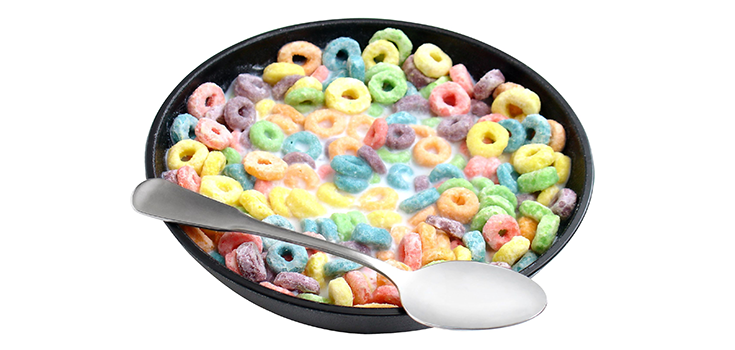Activism Causes Companies to Replace Artificial Dyes with Natural Ones

The look of many of the foods Americans know and love will soon be changing as food companies start removing artificial dyes from their products. That means less yellow yellows, murkier whites, and even a couple less colors in Trix cereal. [1]
Americans are increasingly rejecting artificial colors, preservatives, and flavors. In response, companies like Panera Bread, Subway, and even Kraft and Nestle are pulling the substances from many of their products. Many of the fake colors will be culled from the natural coloring found in beets and carrots, but the process isn’t easy.
That’s why General Mills decided to simply remove two colors from its Trix cereal – it couldn’t find any suitable artificial color replacements. The cereal will be reformulated later this year with the traditionally-red pieces looking noticeably different, thanks to natural coloring from radishes and strawberries.
“We haven’t been able to get that same vibrant color,” said Kate Gallager, General Mills’ cereal developer.
The FDA said as recently as 1950 that children became sick after eating Halloween candy colored with artificial orange dye. The agency drastically shortened its list of approved color additives after finding several had caused “serious adverse events.” [1]
Read: Is Food Coloring Bad for You?
Food companies are now turning to fruits, vegetables, and spices to naturally color their products, but it’s a challenge for manufacturers. The process is more expensive, and colors from fruits and vegetables can be more sensitive to heat and acidity than their fake counterparts. Sometimes recipes need to be altered, because the natural colors are used in higher doses to make them bolder.
Seven synthetic colors are approved for wide use in foods in the U.S. The dyes can’t be mixed to create other colors, however, and the products are made by synthesizing raw materials from petroleum, the FDA says. While these synthetic dyes still dominate in the U.S., they have been linked in scientific studies to hyperactivity in children. Many scientists are calling for them to be phased out. Lisa Lefferts at the Center for Science in the Public Interest also says artificial colors can be used in deceptive ways.
“They mask the absence of ingredients,” she said.
One example is Tropicana’s Twister in Cherry Berry Blast flavor. The beverage lists apple and grape juice as concentrates, but no cherries or berries. Synthetic coloring is added to give it the appearance of having the latter fruits.
Some companies say they won’t switch to natural coloring because a change in how their products look would drive away consumers.
“We have to deliver bold colors and flavors, or people will stop buying,” said Will Papa, chief research and development officer at Hershey, which makes Jolly Ranchers, Twizzlers and Reese’s.
Other companies, like Panera, are moving forward with the changes, believing their customers will get used to them eventually, and will welcome duller colors in exchange for healthier meals.
“You have to remove some of your expectations,” he said.
Panera’s mozzarella cheese will soon have a yellowish color, and cookies with candy-coated chocolate will look duller.
[1] AP
